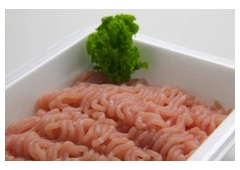
Study to identify consumers’ label information needs
By Food in Canada staff
Business Operations Food Trends Research & Development consumers Study
A U.S. study is underway to determine what information consumers need when it comes to purchasing fresh meat and poultry.

The study, which is being conducted by Yerecic Label, the National Pork Board and the Beef Checkoff Program, is looking at how labels can help clear up the confusion consumers often experience when they get to the meat counter.
The Protein Labeling Study II is being carried out in two phases. The first phase involved focus groups and was completed in 2009.
The second phase, an in-store testing phase, is slated to be complete this fall.
Research results
Results from phase one found that consumers continue to need help when shopping for and cooking fresh meat and poultry.
Results also showed the potential for using new merchandising and technology label applications at the fresh meat case may be a little ahead of their time.
Other key findings include:
• Consumers resist buying unfamiliar cuts because they don’t know how to prepare them;
• Consumers prefer information on labels versus brochures, index cards or other items that can easily get lost; and
• Consumers are continually looking for new recipe ideas.
The authors also say in a fast-paced grocery shopping environment, on-pack meal photographs, recipes and cooking instructions are a simple but effective way to provide consumers with assurance that they can use a cut to make something their family will enjoy.
What’s on a good label
When reviewing a sample, consumers had some insight into what makes a label effective:
• Foundational on-pack information including recipes, basic cooking directions and a cooking chart;
• A variety of recipes for any given cut/category of meat or poultry available in the case;
• A readable size and type font;
• Simplified content;
• A photograph of the finished product, so the consumers know what they are working toward;
• A triangle shape with multiple layers so important information can be relayed on different package sizes while covering less meat;
• A clearly visible invitation to “Peel;”
• A hinged/resealable label, so consumers can view internal information without causing the package to appear “handled” or the label to look “ruined;”
• A website address so consumers can access additional information; and
• Tips about refrigerator and freezer storage as well as defrosting.
Print this page